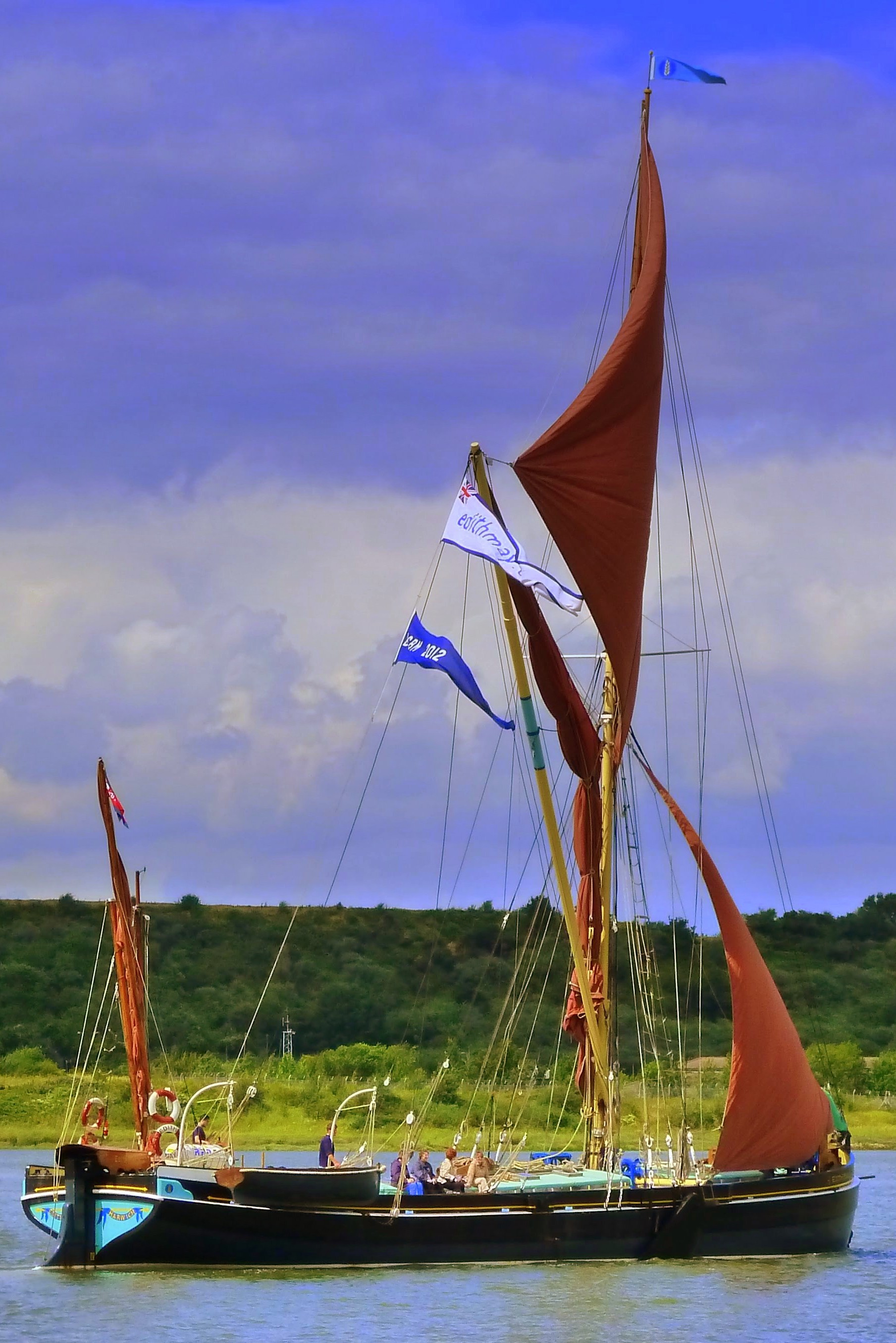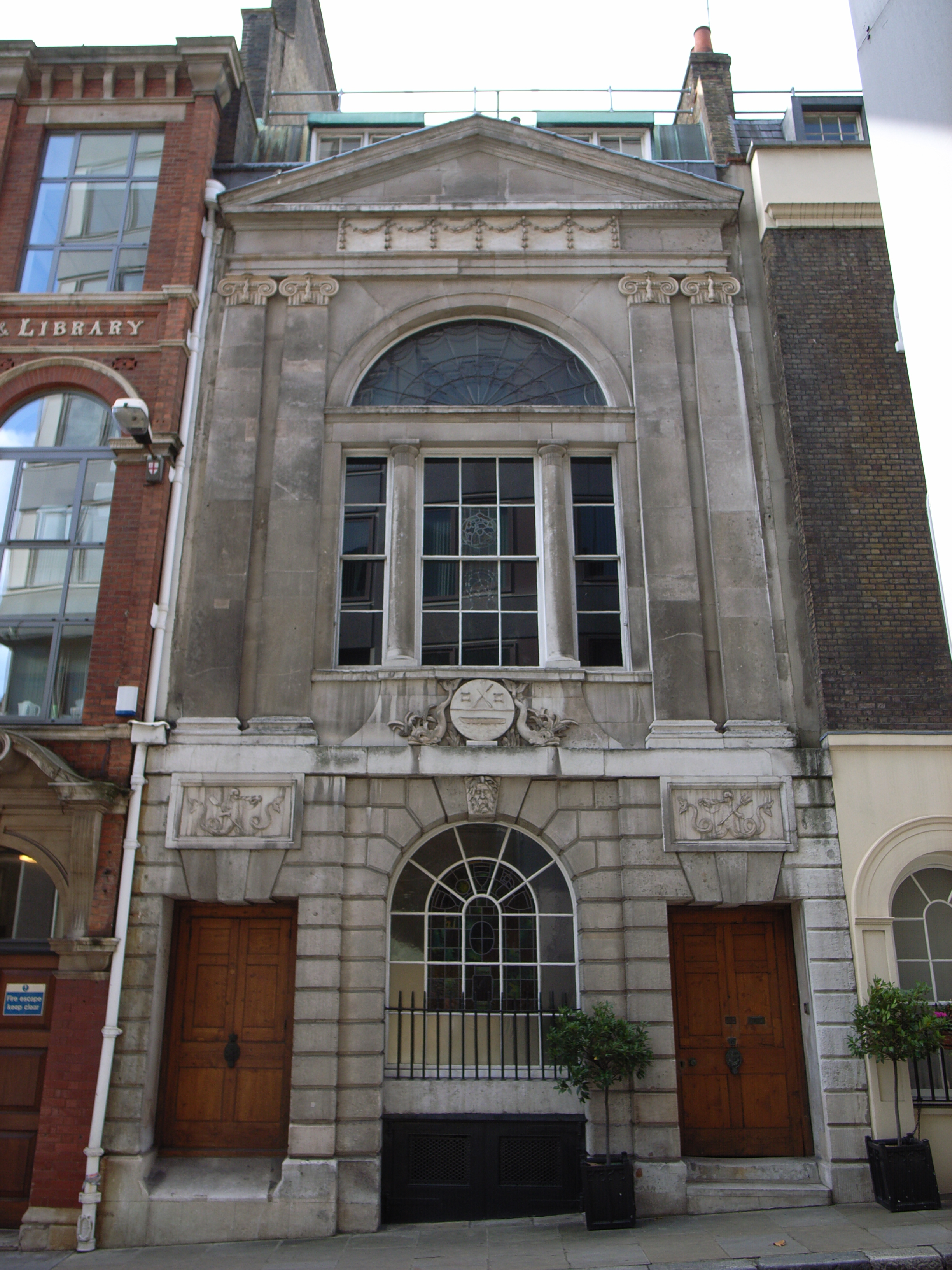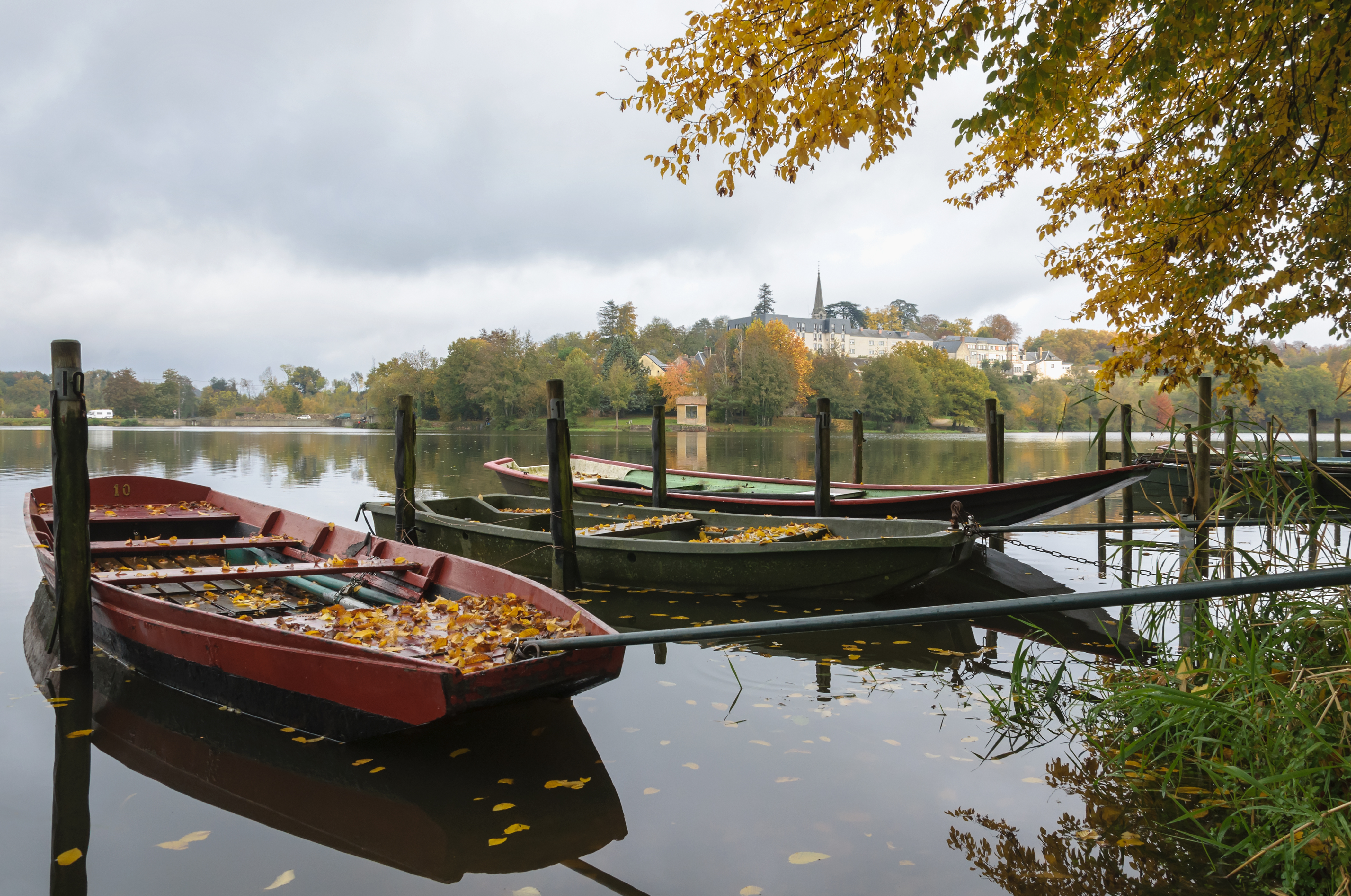|
Barge
Barge nowadays generally refers to a flat-bottomed inland waterway vessel which does not have its own means of mechanical propulsion. The first modern barges were pulled by tugs, but nowadays most are pushed by pusher boats, or other vessels. The term barge has a rich history, and therefore there are many other types of barges. History of the barge Etymology "Barge" is attested from 1300, from Old French ''barge'', from Vulgar Latin ''barga''. The word originally could refer to any small boat; the modern meaning arose around 1480. ''Bark'' "small ship" is attested from 1420, from Old French ''barque'', from Vulgar Latin ''barca'' (400 AD). The more precise meaning of Barque as "three-masted sailing vessel" arose in the 17th century, and often takes the French spelling for disambiguation. Both are probably derived from the Latin ''barica'', from Greek ''baris'' "Egyptian boat", from Coptic ''bari'' "small boat", hieroglyphic Egyptian D58-G29-M17-M17-D21-P1 and similar ... [...More Info...] [...Related Items...] OR: [Wikipedia] [Google] [Baidu] |
Barge On River Thames, London - Dec 2009
Barge nowadays generally refers to a flat-bottomed boat, flat-bottomed inland waterway vessel which does not have its own means of mechanical propulsion. The first modern barges were pulled by tugs, but nowadays most are pushed by Pusher (boat), pusher boats, or other vessels. The term barge has a rich history, and therefore there are many other types of barges. History of the barge Etymology "Barge" is attested from 1300, from Old French ''barge'', from Vulgar Latin ''barga''. The word originally could refer to any small boat; the modern meaning arose around 1480. ''Bark'' "small ship" is attested from 1420, from Old French ''barque'', from Vulgar Latin ''barca'' (400 AD). The more precise meaning of Barque as "three-masted sailing vessel" arose in the 17th century, and often takes the French spelling for disambiguation. Both are probably derived from the Latin ''barica'', from Greek language, Greek ''baris'' "Egyptian boat", from Coptic language, Coptic ''bari'' "small bo ... [...More Info...] [...Related Items...] OR: [Wikipedia] [Google] [Baidu] |
Thames Sailing Barge
A Thames sailing barge is a type of commercial sailing boat once common on the River Thames in London. The flat-bottomed barges with a shallow draught and leeboards, were perfectly adapted to the Thames Estuary, with its shallow waters and narrow tributary rivers. The larger barges were seaworthy vessels, and were the largest sailing vessel to be handled by just two men. The average size was about 120 tons and they carried of canvas sail in six working sails. The mainsail was loose-footed and set up with a sprit, and was brailed to the mast when not needed. It is sheeted to a horse, as is the foresail; they require no attention when tacking. The foresail is often held back by the mate to help the vessel come about more swiftly. The topsail was usually first sail on and last sail off, being fixed to the topmast by hoops. In the upper reaches of the rivers and constricted harbours it reached into the clear air, and when approaching a berth casting off the halliard would drop ... [...More Info...] [...Related Items...] OR: [Wikipedia] [Google] [Baidu] |
Dutch Barge
A Dutch barge is a traditional flat-bottomed shoal-draught barge, originally used to carry cargo in the shallow ''Zuyder Zee'' and the waterways of Netherlands. There are very many types of Dutch barge, with characteristics determined by regional conditions and traditions. Originally, Dutch barges were sailing craft with wooden hulls. Today, while few wooden examples remain, there are many steel barges that are 100 years old or more. Although most Dutch barges have been converted to motor-propulsion, ''schuyt'' sailing contests are still held on the IJsselmeer and on the Wadden Sea ( Waddenzee). Dutch barges have become popular live-aboard leisure craft, and brand-new "Dutch-style" examples continue to be built. The Dutch barge A typical traditional Dutch barge would have gaff rig, a bluff bow and stern, a pair of leeboards and a large rudder. The leeboards and rudder would be raised by an arrangement of blocks and tackles. Schuyts engaged in eel fishing were said to hav ... [...More Info...] [...Related Items...] OR: [Wikipedia] [Google] [Baidu] |
Dutch Barge
A Dutch barge is a traditional flat-bottomed shoal-draught barge, originally used to carry cargo in the shallow ''Zuyder Zee'' and the waterways of Netherlands. There are very many types of Dutch barge, with characteristics determined by regional conditions and traditions. Originally, Dutch barges were sailing craft with wooden hulls. Today, while few wooden examples remain, there are many steel barges that are 100 years old or more. Although most Dutch barges have been converted to motor-propulsion, ''schuyt'' sailing contests are still held on the IJsselmeer and on the Wadden Sea ( Waddenzee). Dutch barges have become popular live-aboard leisure craft, and brand-new "Dutch-style" examples continue to be built. The Dutch barge A typical traditional Dutch barge would have gaff rig, a bluff bow and stern, a pair of leeboards and a large rudder. The leeboards and rudder would be raised by an arrangement of blocks and tackles. Schuyts engaged in eel fishing were said to hav ... [...More Info...] [...Related Items...] OR: [Wikipedia] [Google] [Baidu] |
Lighter (barge)
A lighter is a type of flat-bottomed barge used to transfer goods and passengers to and from moored ships. Lighters were traditionally unpowered and were moved and steered using long oars called "sweeps" and the motive power of water currents. They were operated by skilled workers called lightermen and were a characteristic sight in London's docks until about the 1960s, when technological changes made this form of lightering largely redundant. Unpowered lighters continue to be moved by powered tugs, however, and lighters may also now themselves be powered. The term is also used in the Lighter Aboard Ship (LASH) system. The name itself is of uncertain origin, but is believed to possibly derive from an old Dutch or German word, ''lichten'' (to lighten or unload). In Dutch, the word ''lichter'' is still used for smaller ships that take over goods from larger ships. Lighters, albeit powered ones, were proposed to be used in 2007 at Port Lincoln and Whyalla in South Australia t ... [...More Info...] [...Related Items...] OR: [Wikipedia] [Google] [Baidu] |
Widebeam
A widebeam is a canal boat built in the style of a British narrowboat but with a beam of or greater.The Canal and River Trust (CRT) gives more than one minimum width for a wide beam on their website: "anything wider than []" in ''Wide beam, wider considerations'' and "[A narrowboat is] up to a maximum of 2.2m wide ... [and a widebeam is] up to double the width of a narrowboat or even wider on larger rivers" ''All craft great and small'' . However in April 2020 the CRT started to issue licences that charge more for any canal boat that has a beam of or greater, and is now the de facto definition for the minimum width of a widebeam. The nature of a widebeam The CRT gives no precise definition of a "widebeam", merely distinguishing it from other types of canal craft such as: narrowboats, Thames sailing barges, Dutch barges, other barge types, grp cabin cruisers, and wooden boats. Nevertheless, the salient features of a modern widebeam are: A widebeam is built in the style of ... [...More Info...] [...Related Items...] OR: [Wikipedia] [Google] [Baidu] |
Lightermen
A lighterman is a worker who operates a lighter, a type of flat-bottomed barge, which may be powered or unpowered. In the latter case, today it is usually moved by a powered tug. The term is particularly associated with the highly skilled men who operated the unpowered lighters moved by oar and water currents in the Port of London. Lightermen in the Port of London History Lightermen were one of the most characteristic groups of workers in London's docks during the heyday of the Port of London, but their trade was eventually rendered largely obsolete by changes in shipping technology. They were closely associated with the watermen, who carried passengers, and in 1700 joined the Company of Watermen to form the Company of Watermen and Lightermen. This is not, strictly speaking, a livery company but a "City Company Without Grant of Livery", formed in 1700 by Act of Parliament. The Guild continues to license watermen and lightermen working on the River Thames. Watermans' Hall i ... [...More Info...] [...Related Items...] OR: [Wikipedia] [Google] [Baidu] |
Canal Craft
This is a list of the types of craft to be found on the canals and non-tidal rivers of the United Kingdom for which the Canal and River Trust have a licence category: *Thames sailing barges, *Barges *Dutch barges *Cabin cruisers *Canoes and kayaks * Mersey flat *Narrowboat A narrowboat is a particular type of canal boat, built to fit the narrow locks of the United Kingdom. The UK's canal system provided a nationwide transport network during the Industrial Revolution, but with the advent of the railways, commer ...s *Stand-up paddleboard * Open powered boats * Rowing boats * Sail boats * Widebeams Notes References * {{cite web , title=All craft great and small , website=Canal & River Trust , date=28 January 2019 , url=https://canalrivertrust.org.uk/enjoy-the-waterways/boating/getting-afloat/all-craft-great-and-small , ref={{sfnref, Canal & River Trust, 2019 , access-date=20 January 2020 Boat types Canals in the United Kingdom Houseboats Lists of watercraft types [...More Info...] [...Related Items...] OR: [Wikipedia] [Google] [Baidu] |
Narrowboat
A narrowboat is a particular type of canal boat, built to fit the narrow locks of the United Kingdom. The UK's canal system provided a nationwide transport network during the Industrial Revolution, but with the advent of the railways, commercial canal traffic gradually diminished and the last regular long-distance transportation of goods by canal had virtually disappeared by 1970. However, some commercial traffic continued. From the 1970s onward narrowboats were gradually being converted into permanent residences or as holiday lettings. Currently, about 8580 narrowboats are registered as 'permanent homes' on Britain's waterway system and represent a growing alternative community living on semi-permanent moorings or continuously cruising. For any boat to enter a narrow lock, it must be under wide, so most narrowboats are nominally wide. A narrowboat's maximum length is generally , as anything longer will be unable to navigate much of the British canal network, because the ... [...More Info...] [...Related Items...] OR: [Wikipedia] [Google] [Baidu] |
Flat-bottomed Boat
A flat-bottomed boat is a boat with a shallow draft, two-chined hull, which allows it to be used in shallow bodies of water, such as rivers, because it is less likely to ground. The flat hull also makes the boat more stable in calm water, which is good for hunters and anglers. However this design becomes less stable in choppy water. This is because it causes the boat to travel ''on'' the water, instead of ''through'' it, as a boat with a rounded or V-shaped hull would. Flat hulls are simple to construct, making them popular with boat-building hobbyists. In Britain they came to popular notice during the planned French invasion of Britain in 1759, when a large-number of flat-bottomed boats were prepared by the French to ferry their invasion force across the channel and a number were destroyed during the British Raid on Le Havre. The flat-bottoms are mentioned in the song ''Heart of Oak'' written by David Garrick during 1759. Types *Barge * Bateau * Bull boat * Car float ... [...More Info...] [...Related Items...] OR: [Wikipedia] [Google] [Baidu] |
River Severn
, name_etymology = , image = SevernFromCastleCB.JPG , image_size = 288 , image_caption = The river seen from Shrewsbury Castle , map = RiverSevernMap.jpg , map_size = 288 , map_caption = Tributaries (light blue) and major settlements on and near the Severn (bold blue) , pushpin_map = , pushpin_map_size = 288 , pushpin_map_caption= , subdivision_type1 = Country , subdivision_name1 = England and Wales , subdivision_type2 = , subdivision_name2 = , subdivision_type3 = Region , subdivision_name3 = Mid Wales, West Midlands, South West , subdivision_type4 = Counties , subdivision_name4 = Powys, Shropshire, Worcestershire, Gloucestershire , subdivision_type5 = Cities , subdivision_name5 = Shrewsbury, Worcester, Gloucester, Bristol , length = , width_min = , width_avg = , width_max = , depth_min = , depth_avg ... [...More Info...] [...Related Items...] OR: [Wikipedia] [Google] [Baidu] |
River Thames
The River Thames ( ), known alternatively in parts as the The Isis, River Isis, is a river that flows through southern England including London. At , it is the longest river entirely in England and the Longest rivers of the United Kingdom, second-longest in the United Kingdom, after the River Severn. The river rises at Thames Head in Gloucestershire, and flows into the North Sea near Tilbury, Essex and Gravesend, Kent, via the Thames Estuary. From the west it flows through Oxford (where it is sometimes called the Isis), Reading, Berkshire, Reading, Henley-on-Thames and Windsor, Berkshire, Windsor. The Thames also drains the whole of Greater London. In August 2022, the source of the river moved five miles to beyond Somerford Keynes due to the heatwave in July 2022. The lower reaches of the river are called the Tideway, derived from its long tidal reach up to Teddington Lock. Its tidal section includes most of its London stretch and has a rise and fall of . From Oxford to th ... [...More Info...] [...Related Items...] OR: [Wikipedia] [Google] [Baidu] |








